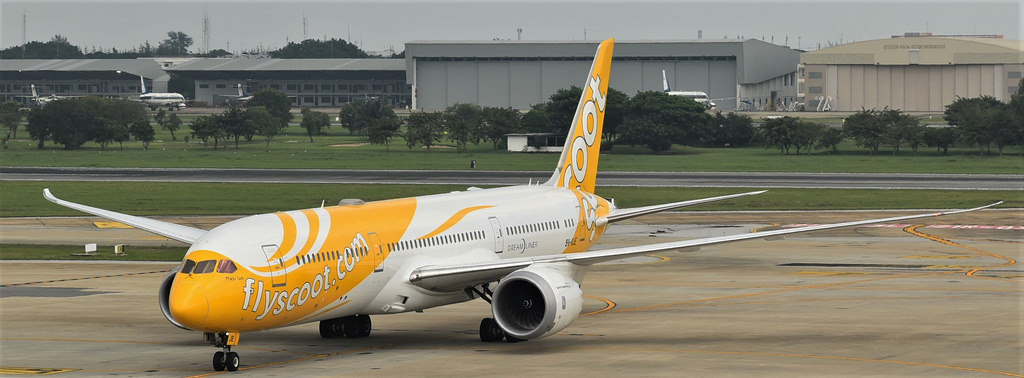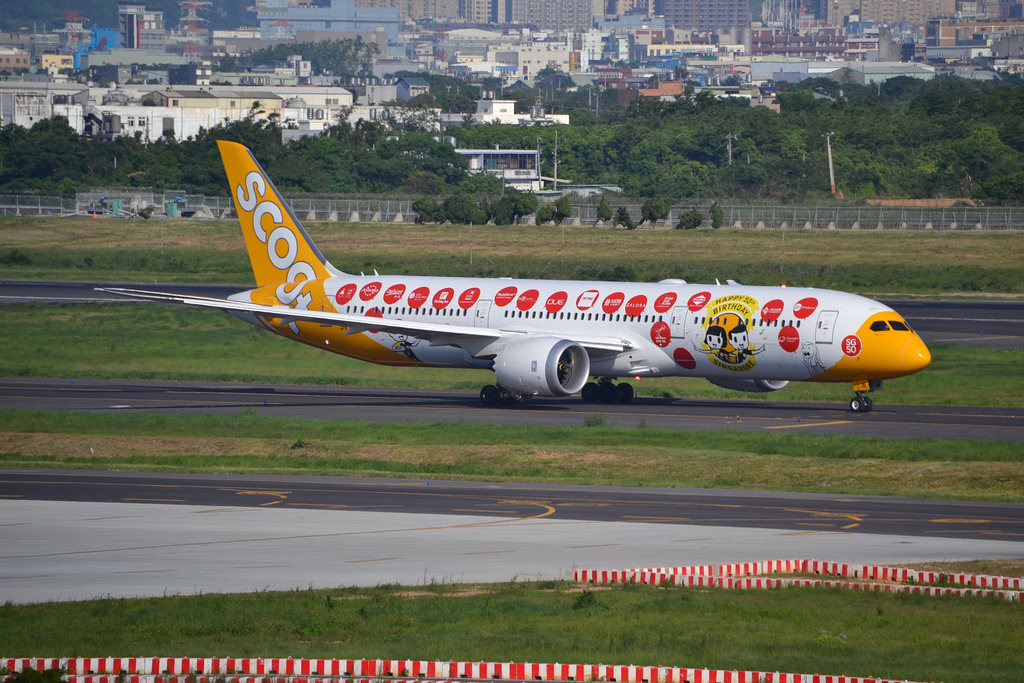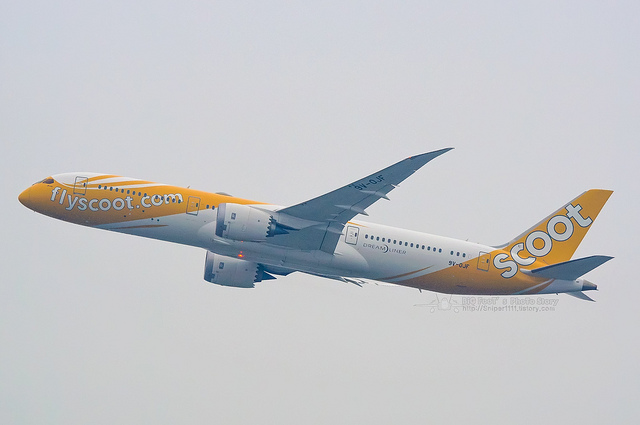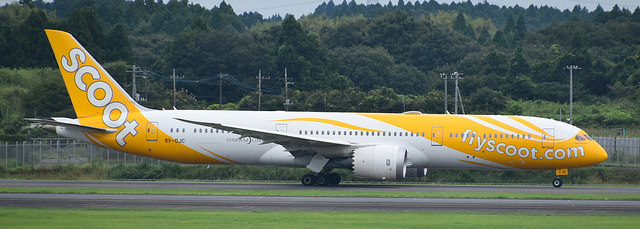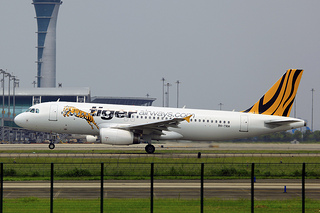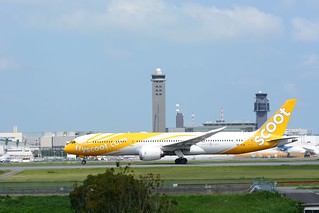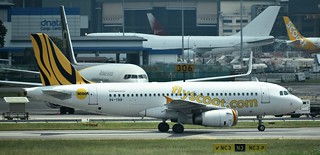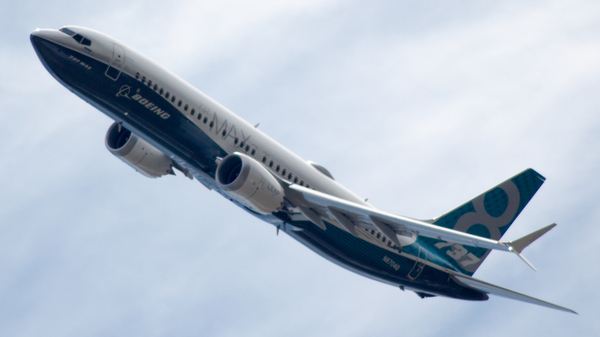Scoot B789 near Perth on Oct 11th 2018, uncommanded engine shut down in flight
Last Update: December 1, 2020 / 08:58:19 GMT/Zulu time
Incident Facts
Date of incident
Oct 11, 2018
Classification
Incident
Airline
Scoot Airlines
Flight number
TR-16
Departure
Singapore, Singapore
Destination
Perth, Australia
Aircraft Registration
9V-OJE
Aircraft Type
Boeing 787-9 Dreamliner
ICAO Type Designator
B789
The return flight TR-17 was cancelled, the passengers were rebooked onto other flights.
Australia's TSB reported: "While descending into Perth, there was an uncommanded in-flight shut down of the right engine. The flight crew continued the approach and the aircraft landed safely." The occurrence was rated an incident and is being investigated.
On Dec 1st 2020 the ATSB released their final report concluding the probable causes of the incident were:
Contributing factors
- Following a series of status and alert messages related to the aircraft’s right engine, the engine shut down during descent. The flight crew followed the appropriate procedures and landed the aircraft safely using the operational engine.
- The engine shutdown was the result of insufficient fuel delivery due to low pressure in the fuel metering valve servo assembly, as debris from worn fuel pump bearings had blocked its inlet filter.
- The engine manufacturer, Rolls-Royce, identified that between late 2018 and early 2019 the operator’s fleet of 787 aircraft were particularly susceptible to low life wear in the journal bearings of the secondary high-pressure fuel pump.
Other finding
- Rolls-Royce identified a number of potential factors that led to the component wear but, due to the number of variables, a single/dominant reason could not be established.
The ATSB described the sequence of events:
Approximately 2 hours into the flight, the crew received two status messages indicating abnormalities within the right engine. Three hours later, during descent, the aircraft was passing through FL 2502 when the crew noticed that the right engine was slow to respond to commanded inputs. Throughout the descent, the right engine performance continued to decline. Passing through 9,000 ft, severe thrust asymmetry developed, and the captain noticed rudder input from the autopilot. Shortly after, at 1853, the crew received the engine-indicating and crew-alerting system (EICAS) message ENG FAIL R, and the right engine shut down.
In response, the flight crew declared a PAN3 and requested air traffic control clearance to level off at 5,000 feet and be vectored off the approach to allow time for completion of the quick reference handbook (QRH) checklist items. Completion of the QRH checklist required the flight crew to decide whether they should attempt to relight the engine. Due to the proximity of the airport and because the aircraft is capable of landing safely with one engine, the flight crew decided that attempting an engine restart was unnecessary. After the checklist was completed, the flight crew conducted a NITS4 briefing with the cabin crew.
Subsequently, the flight crew completed the landing performance calculations and advised ATC that they were ready to land. The flight crew also requested that emergency services conduct a visual inspection of the aircraft after landing.
At 1909, the aircraft landed safely at Perth Airport and emergency services carried out a visual inspection. The aircraft was cleared to taxi to the parking bay and disembark passengers normally via the aerobridge.
There were no injuries sustained and no damage to the aircraft as a result of the occurrence.
Subsequent maintenance
Following the occurrence, an engineering team carried out a detailed inspection of the aircraft to address the in-flight shutdown and status/EICAS warning messages observed by the crew. The technical examination resulted in replacement of the right engine hydro-mechanical unit (HMU) and a high-power engine run was then successfully performed.
On 12 October 2018, a non-revenue flight (no passengers or cargo) was conducted to return the aircraft to Singapore for further maintenance, during which time the electronic engine controller (EEC) was replaced. The aircraft then returned to revenue service.
On 15 October 2018, the aircraft was on a flight from Sydney to Singapore when several maintenance messages indicating similar issues to the occurrence flight were generated, but there was no noticeable effect on engine performance. Following the flight, additional components were replaced, including the:
- HMU (further replacement)
- fuel pump
- high- and low-pressure fuel filters
- left and right variable stator vane actuator.
The aircraft was then declared serviceable and returned to service with no further recurrence of the maintenance messages.
The ATSB summarized the investigation conducted by the engine manufacturer:
Approximately 2 hours into the flight, during cruise, the right engine’s EEC generated the following message:
Hydro-Mechanical Unit (Right Engine) fuel metering valve (FMV) torque motor current is too low or too high.
This message indicated that the current required to adjust the fuel flow via the FMV was outside the expected range. Eleven minutes later, another message indicated that the current had exceeded an allowable limit:
Hydro-Mechanical Unit (Right Engine) fuel metering valve (FMV) torque motor current is failed too low or too high.
During descent, approximately 3 hours later, two more messages were generated:
Hydro-Mechanical Unit (Right Engine) fuel metering valve (FMV) is not in commanded position.
Right Engine is failed below idle with fuel switch on.
Rolls-Royce determined that the first message was evidence the FMV was taking longer than it should have to reach the position specified by the EEC. It was found that the second message was generated after the EEC had commanded a deceleration. The FMV moved below the idle position as requested, but once deceleration had occurred, it did not move back to the directed idle position. The right engine then ran at sub-idle speed for a short time before shutting down.
Data for the entire occurrence flight indicated that the torque motor current required to control the FMV position increased throughout the flight up until the in-flight shutdown.
Rolls-Royce also identified that the maintenance messages generated during the flight to Singapore on 15 October 2018 indicated that control of the new FMV was still requiring a higher than expected torque motor current. However, the engine continued to operate normally, and the flight was completed without incident.
Component examination Rolls-Royce examined the HMU from the occurrence flight (HMU 1) as well as the one from the subsequent flight (HMU 2). In both units, a build-up of metallic debris was found in various locations, although more debris was found in HMU 1. The inlet filter to the FMV servo assembly was at least partially blocked with debris in both units.
Rolls-Royce concluded that the in-flight shutdown of 9V-OJE’s right engine was the result of the blocked inlet filter on the FMV servo assembly. The blockage restricted the EEC’s ability to control the FMV, and ultimately, the flow of fuel to the engine.
Analysis of the metallic debris revealed that it consisted of material from the fuel pump bearings and the casing. All three stages of the pump (the LP pump, and the two HP pumps) were disassembled and examined by Rolls-Royce in the presence of the United Kingdom Air Accidents Investigation Branch.
The examination found that the debris originated from the secondary HP pump. The bearings for the secondary HP pump driven gear were heavily worn, with evidence of scoring and missing material (Figure 2). Rolls-Royce found that the casing for the driven gear had more wear than would be expected during normal operation, likely due to shaft movement resulting from the damaged journal bearings. No damage was found on other bearings within the secondary HP pump or the other two fuel pumps.
Rolls-Royce reviewed the manufacturing records for the secondary HP pump, but found that it was typical of the fleet. No abnormalities had been noted, and the pump dimensions were within the accepted tolerances. The material composition of the fuel pump components was checked and found to be similar to the rest of the population. The fuel pump and HMU from the left engine were removed and inspected as a precaution, but there was no evidence of journal wear or debris build-up.
Trent 1000 fleet inspection On 1 November 2018, another Scoot Boeing 787 generated maintenance messages related to the HMU during start-up, prior to a flight. The engine was inspected, and some wear was also found on the secondary HP pump journal bearings.
To search for similar HMU maintenance messages, Rolls-Royce examined all maintenance data across the fleet of Trent 1000 Package B and Package C engines and continued to monitor ongoing flights. Six other events were found where messages were generated due to fuel pump debris blocking the FMV servo assembly inlet filter. Five of these events were from aircraft operated by Scoot, while one was from a different operator.
Of the events found in the Scoot fleet, the age of the pumps varied between 5,201 and 12,686 hours. The recommended life of the pumps was 22,000 hours. Based on the number of occurrences compared with the greater Trent 1000 fleet, Rolls-Royce determined that the secondary HP pump journal bearings on Scoot aircraft were particularly susceptible to low life journal wear.
In an effort to determine what was increasing wear susceptibility in the Scoot fleet’s bearings, Rolls-Royce identified a number of potential factors, including the following:
- Pump manufacture and build: The worn pumps found on Scoot aircraft had been manufactured over a number of years from 2015 to 2017. As such, it was determined that a batch or build issue was unlikely to be a common factor.
- Fuel quality: Analysis of fuel samples from Singapore Changi Airport found no anomalies within the 12 months prior to the occurrence involving 9V-OJE. There were also no reports of fuel pump bearing wear from other Trent 1000 operators that used the same airport.
- Operations: Rolls-Royce noted that Scoot generally flew shorter routes than most other Trent 1000 operators, but there were comparable operations with no evidence of fuel pump journal wear. Within the Scoot fleet, aircraft flew to multiple destinations, and there were no specific city pairs associated with the engines with worn bearings.
- Maintenance: Scoot shared its maintenance facilities with another operator that also used Trent 1000 engines. There was no evidence of fuel pump bearing wear from this operator.
Based on its investigation, Rolls-Royce concluded the following:
It is likely that a combination of factors have led to Scoot bearings being particularly susceptible to significant low life wear, but analysis of data to date has not identified any significant differences between worn and unworn bearings, both within the Scoot fleet and the wider Trent 1000 Pack B & C fleets.
The ATSB analysed:
While on descent into Perth, the right engine of 9V-OJE shut down. After completing the necessary checklists, the flight crew landed the aircraft safely on one engine. There were no injuries sustained as a result.
The engine manufacturer, Rolls-Royce, concluded that the engine shutdown was the result of a blocked inlet filter on the fuel metering valve (FMV) servo assembly. This blockage restricted the electronic engine controller’s (EEC) ability to adjust fuel pressures within the servo. As a result, the EEC had limited control over the FMV position, and consequently the amount of fuel flowing to the burners. When the EEC commanded the FMV to increase fuel flow from sub-idle to idle levels, it did not respond in time, and the engine shut down. The blockage was due to debris from worn journal bearings in the secondary HP fuel pump driven gear.
Rolls-Royce’s examination of flight data and maintenance records from its Trent 1000 engines identified that Scoot’s fleet of 787 aircraft had been particularly susceptible to low life wear in their secondary HP pump journal bearings over a period of several months. The Rolls-Royce investigation identified various potential factors that might have contributed to low life journal wear,
including the fleet’s operation, maintenance, fuel quality, or pump design and construction.
However, it found no evidence that any factors were significantly different to the wider Trent 1000 fleet. Additionally, due to the number of variables associated with operations, maintenance, design and manufacture, it was not possible to determine the relative effect of these factors (and possibly others) when combined.
Incident Facts
Date of incident
Oct 11, 2018
Classification
Incident
Airline
Scoot Airlines
Flight number
TR-16
Departure
Singapore, Singapore
Destination
Perth, Australia
Aircraft Registration
9V-OJE
Aircraft Type
Boeing 787-9 Dreamliner
ICAO Type Designator
B789
This article is published under license from Avherald.com. © of text by Avherald.com.
Article source
You can read 2 more free articles without a subscription.
Subscribe now and continue reading without any limits!
Read unlimited articles and receive our daily update briefing. Gain better insights into what is happening in commercial aviation safety.
Send tip
Support AeroInside by sending a small tip amount.
Related articles
Scoot B789 at Taipei on Jun 19th 2023, dropped nose wheel in flight
A Scoot Boeing 787-9, registration 9V-OJF performing flight TR-897 from Seoul (South Korea) to Taipei (Taiwan), landed on Taipei's runway 23L at…
Scoot B789 near Adelaide on Apr 29th 2023, engine shut down in flight
A Scoot Airlines Boeing 787-9, registration 9V-OJC performing flight TR-3 from Sydney,NS (Australia) to Singapore (Singapore) with 311 people on…
Scoot A320 at Hat Yai on Apr 4th 2023, tail strike on landing
A Scoot Airbus A320-200, registration 9V-TRH performing flight TR-634 from Singapore (Singapore) to Hat Yai (Thailand), landed on Hat Yai's runway 26…
Scoot B789 at Perth on Jul 11th 2022, brake temperature after departure
A Scoot Boeing 787-9, registration 9V-OJA performing flight TR-9 from Perth,WA (Australia) to Singapore (Singapore), was climbing out of Perth's…
Scoot A319 near Singapore on Jun 14th 2019, loss of cabin pressure
A Scoot Airbus A319-100, registration 9V-TRB performing flight TR-387 from Angeles (Philippines) to Singapore (Singapore) with 129 people on board,…
Newest articles
Bonzo B38M at Sunshine Coast on Apr 23rd 2024, fumes in cockpit
A Bonzo Airline Boeing 737-8 MAX, registration VH-UJK performing flight AB-570 from Avalon,VI to Sunshine Coast,QL (Australia), was on approach to…
Link SF34 at Sydney on Oct 24th 2022, too low of final ILS approach
A Link Airways Saab 340B on behalf of Virgin Australia, registration VH-VEQ performing flight VA-669 from Canberra,AC to Sydney,NS (Australia), was…
Subscribe today
Are you researching aviation incidents? Get access to AeroInside Insights, unlimited read access and receive the daily newsletter.
Pick your plan and subscribePartner

A new way to document and demonstrate airworthiness compliance and aircraft value. Find out more.

ELITE Simulation Solutions is a leading global provider of Flight Simulation Training Devices, IFR training software as well as flight controls and related services. Find out more.

Your regulation partner, specialists in aviation safety and compliance; providing training, auditing, and consultancy services. Find out more.
AeroInside Blog
Popular aircraft
Airbus A320Boeing 737-800
Boeing 737-800 MAX
Popular airlines
American AirlinesUnited
Delta
Air Canada
Lufthansa
British Airways
